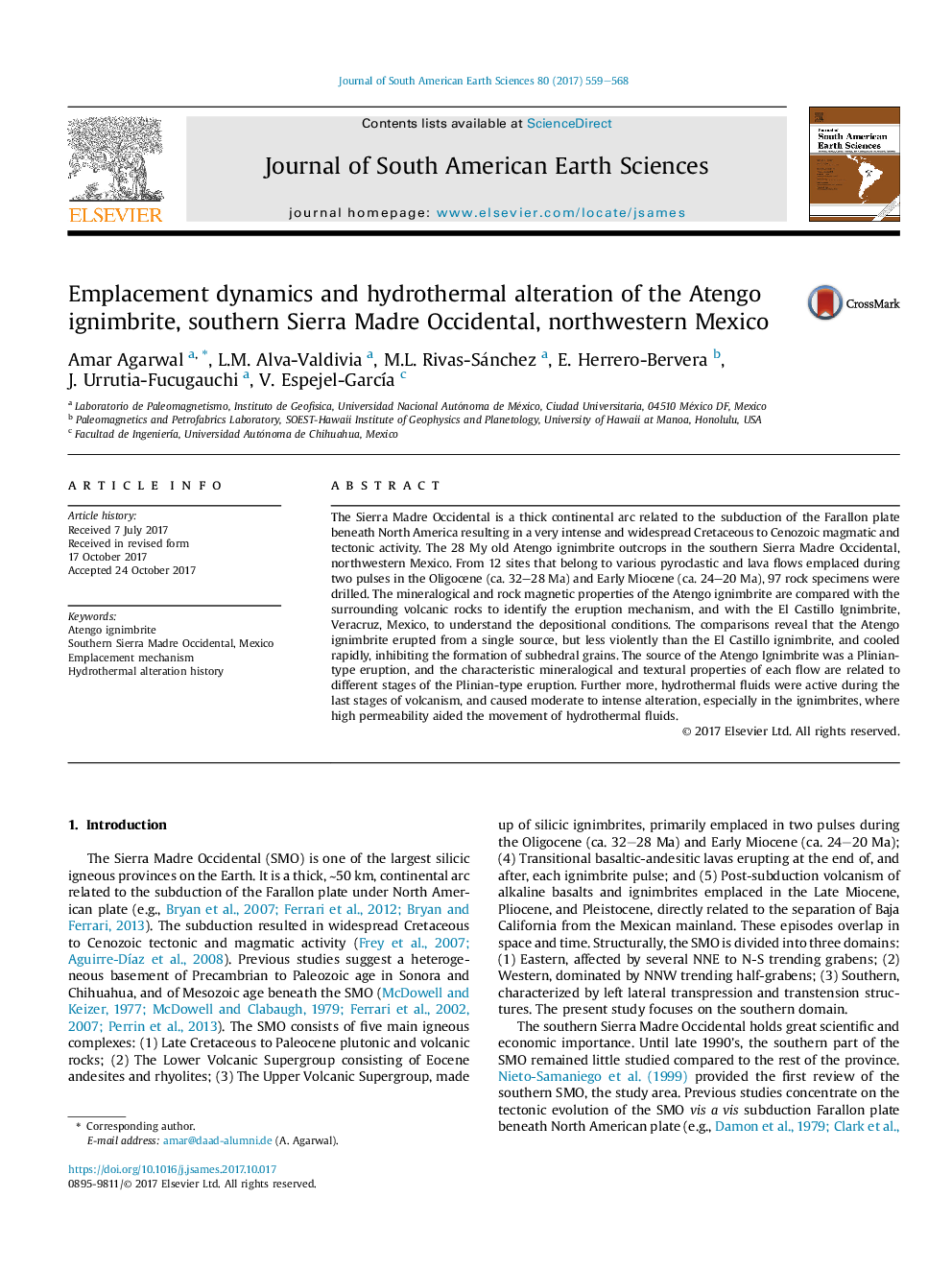| Article ID | Journal | Published Year | Pages | File Type |
|---|---|---|---|---|
| 8907790 | Journal of South American Earth Sciences | 2017 | 10 Pages |
Abstract
The Sierra Madre Occidental is a thick continental arc related to the subduction of the Farallon plate beneath North America resulting in a very intense and widespread Cretaceous to Cenozoic magmatic and tectonic activity. The 28 My old Atengo ignimbrite outcrops in the southern Sierra Madre Occidental, northwestern Mexico. From 12 sites that belong to various pyroclastic and lava flows emplaced during two pulses in the Oligocene (ca. 32-28 Ma) and Early Miocene (ca. 24-20 Ma), 97 rock specimens were drilled. The mineralogical and rock magnetic properties of the Atengo ignimbrite are compared with the surrounding volcanic rocks to identify the eruption mechanism, and with the El Castillo Ignimbrite, Veracruz, Mexico, to understand the depositional conditions. The comparisons reveal that the Atengo ignimbrite erupted from a single source, but less violently than the El Castillo ignimbrite, and cooled rapidly, inhibiting the formation of subhedral grains. The source of the Atengo Ignimbrite was a Plinian-type eruption, and the characteristic mineralogical and textural properties of each flow are related to different stages of the Plinian-type eruption. Further more, hydrothermal fluids were active during the last stages of volcanism, and caused moderate to intense alteration, especially in the ignimbrites, where high permeability aided the movement of hydrothermal fluids.
Keywords
Related Topics
Physical Sciences and Engineering
Earth and Planetary Sciences
Earth and Planetary Sciences (General)
Authors
Amar Agarwal, L.M. Alva-Valdivia, M.L. Rivas-Sánchez, E. Herrero-Bervera, J. Urrutia-Fucugauchi, V. Espejel-GarcÃa,
